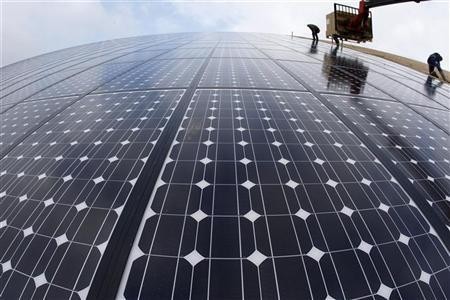Researchers claim that they have now developed a more efficient way to create cleaner green energy from a unique kind of crystalline materials called perovskites.
A team from Brown University has discovered that perovskite films found in solar cells are more cheaper to utilize compared to silicon wafers that are usually made for standard solar cells.
The team also found a techinique to create these perovskite crystals with a solvent bath under room temperature conditions altogether avoiding the blast of intense heat that is required for recent crystallization processes.
This very technique can produce high quality crystalline films that can offer precise conrol of thickness especially over large areas which can also be applied for mass production of perovskite solar cells.
The cells are highly efficient as researchers claim that the amount of sunlight that can be converted into electricity has increased exponentially in just five years where many scientists are interested to produce the crystals more efficiently.
Compared to solar cells, it took decades to achieve this same kind of efficiency for conventional solar panel materials. According to Nitin Padture, people have already made good pervoskite films over small areas like a centimeter of a square. However Padture says that all current methods require heat from temperatures ranging from 100 to 150 degrees Celsius and this heating process can create a lot of issues.
This heating process can lead to crystals forming unevenly, where tiny pinholes can be found among the film that can siginificantly reduce the efficiency of solar cells. This heating technique also limits the use of flexiblle, cheap plastic substrates for versatile cell shapes since it would damage them.
Using a solvent-solvent extraction approach (SSE), researchers can dissolve precursors of perovskite called NMP and deposit them on a substrate. They are then immersed in another solvent called diethyl ether and produces an end result of a smoother film of perovskite crystals.
This method involves no heating and any substrate can be utilized where the solvent method only takes less than two minutes compared to the more than an hour heating technique and can produce a variety of colors as well.
This study is published in the Royal Society of Chemistry's Journal of Materials Chemistry.




























